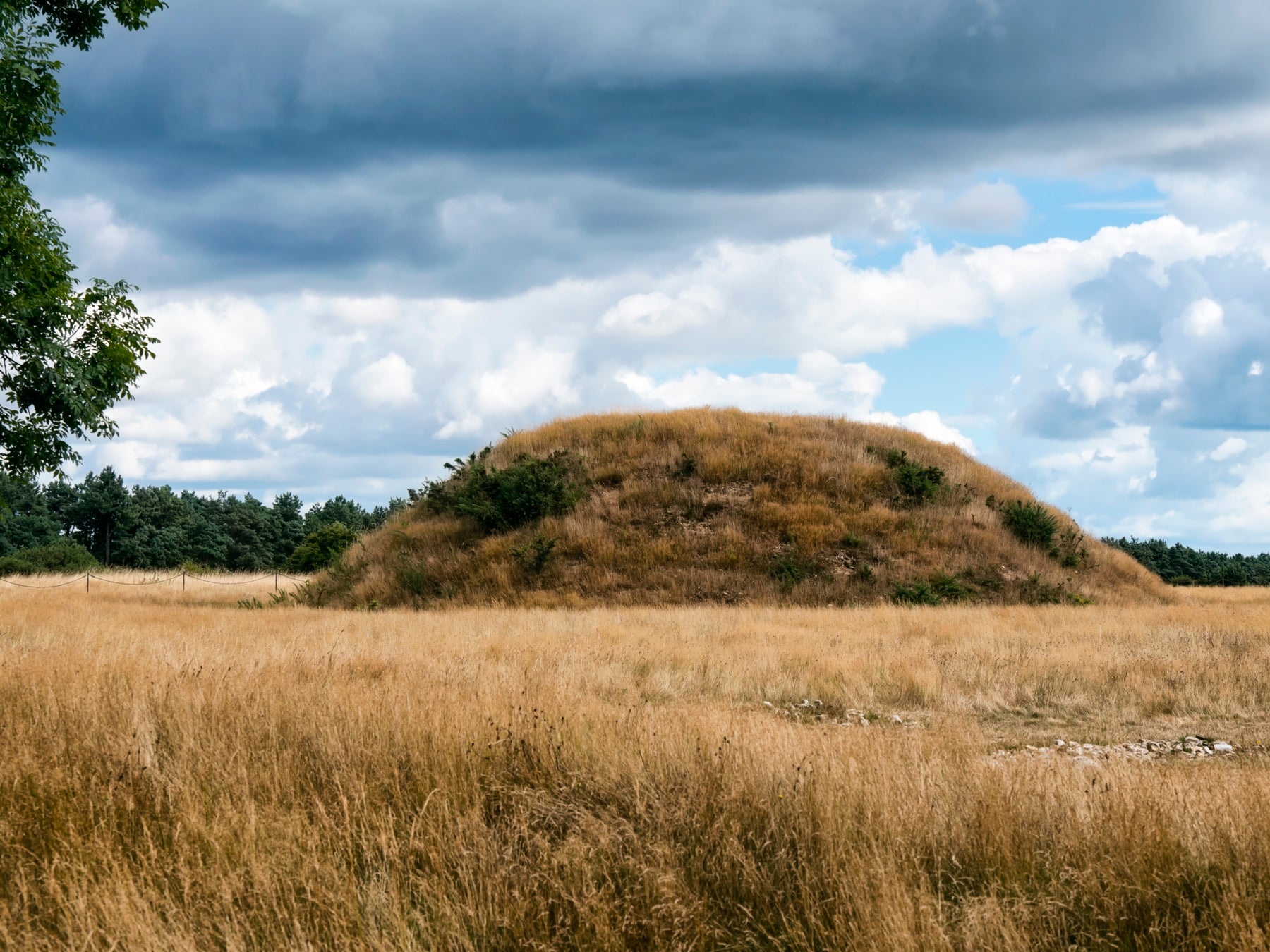Find out why teachers and school leaders love PlanBee
Find out why teachers and school leaders love PlanBee

Much of what we now know about the Anglo-Saxons comes from one major discovery at Sutton Hoo...
Not long before the outbreak of World War 2 in 1939, a woman called Edith Pretty became intrigued by several large mounds, or small hills, on her land in Suffolk. She asked a local archaeologist, Basil Brown, to excavate some of them to see if there was anything of interest buried within.

He began with one of the smaller mounds, but didn’t find much of interest. At Edith’s request, Basil moved onto one of the larger mounds. There, he found one of the most important discoveries of the 20th century - a huge wooden ship had once been buried under the earth. The wood had long since rotted away, but a clear impression of its shape was still left in the soil. It was 27 metres long!

Now recognised as a significant find, other archaeologists, including Charles Phillips, joined the excavation. As they dug further, they discovered that a hut had been built in the middle of the ship. Inside, they found a coffin and many other items, including armour, weapons, ornaments, jewellery, silver and gold tableware, musical instruments and gold coins! Altogether, 263 objects were unearthed. However, there was no sign of a body...
At first, it was thought that the ship and coffin were a cenotaph (an empty tomb made in honour of a person whose remains are elsewhere). However, the widely held belief now is that, due to the acidic soil in the area, the bones had dissolved over time. But without a body, how can we tell who was buried there?
We can gain many clues from the items that were found within the hut, or burial chamber:
Many experts today have come to the conclusion that the person buried within the ship was King Raedwald, the ruler of East Anglia from c.599 until his death c.624 CE. However, it is unlikely that we will ever know for certain.

The items uncovered at Sutton Hoo not only tell us about the person they were buried with, but about the Anglo-Saxons as a people. Prior to the excavation, the Anglo-saxon period was viewed as ‘a dark age’ and the people of the time unsophisticated. However, the quality and craftsmanship of the objects found show that they were a highly-skilled, well-travelled and cultured society.
If you would like to find out more about the Anglo-Saxon period, have a look at PlanBee’s Anglo-Saxon Facts blog.
If you are looking for ready-to-teach KS2 lessons, check out our two History schemes: Anglo-Saxons, Picts and Scots for Year 3/4, and Vikings vs Anglo-Saxons for Y5/6.
Comments
Leave a comment